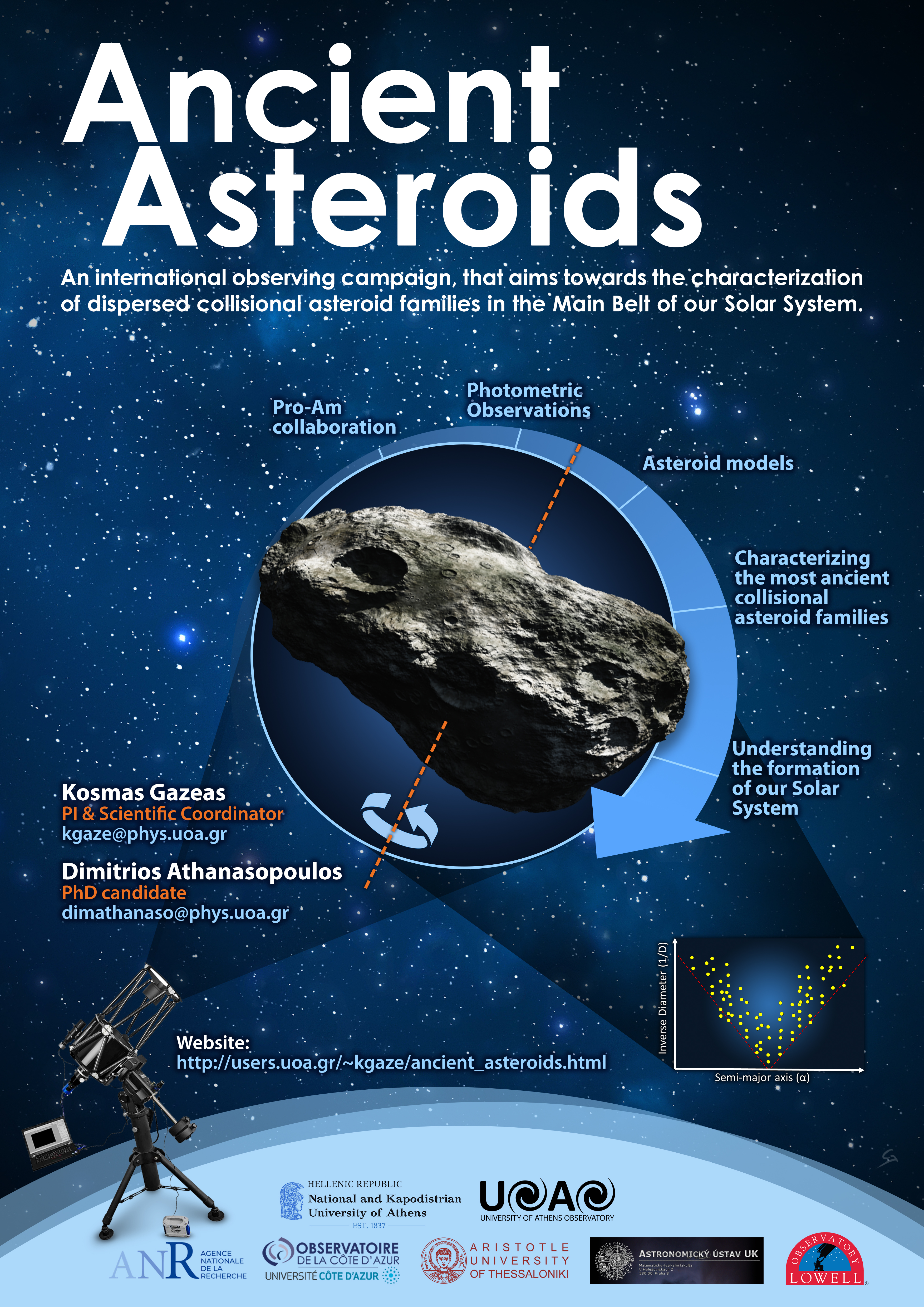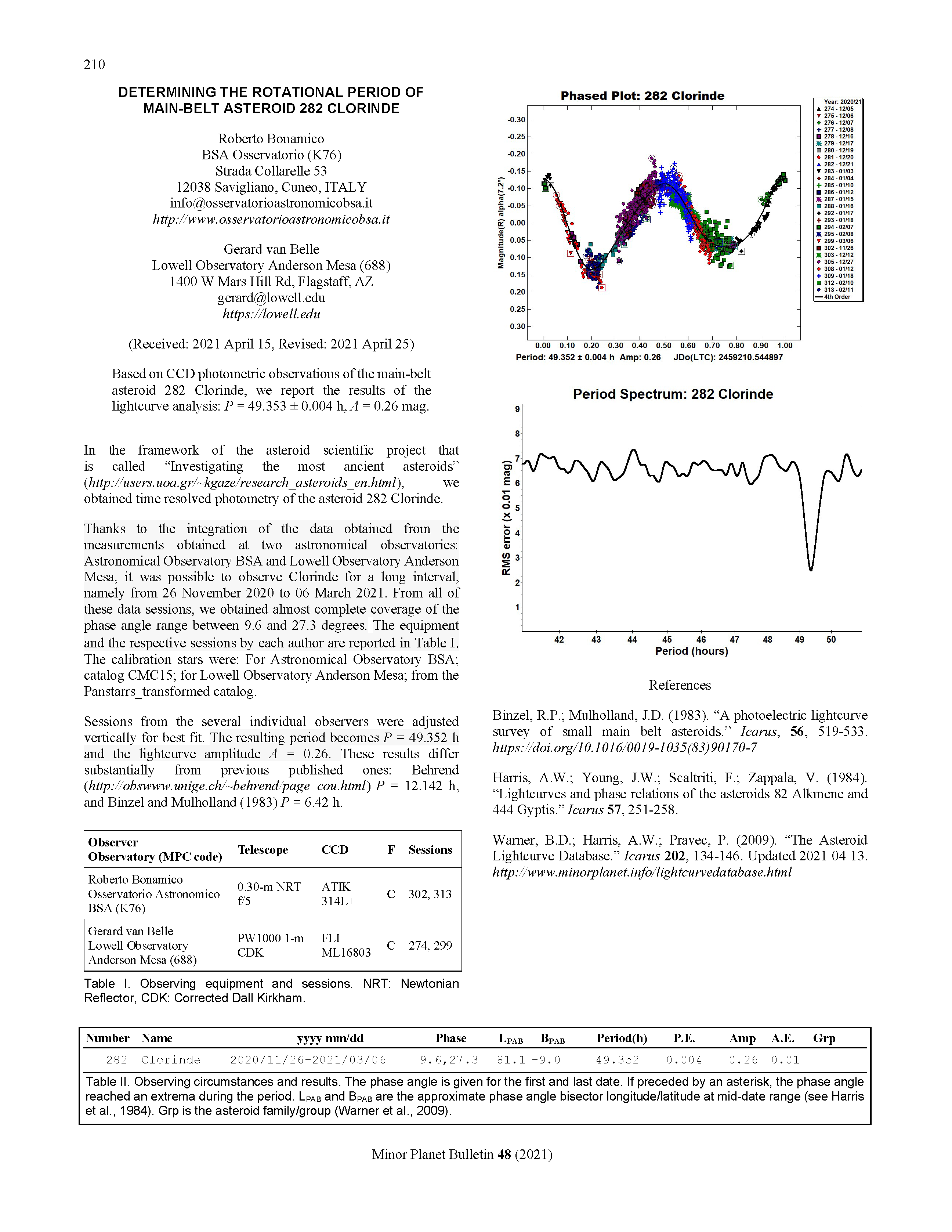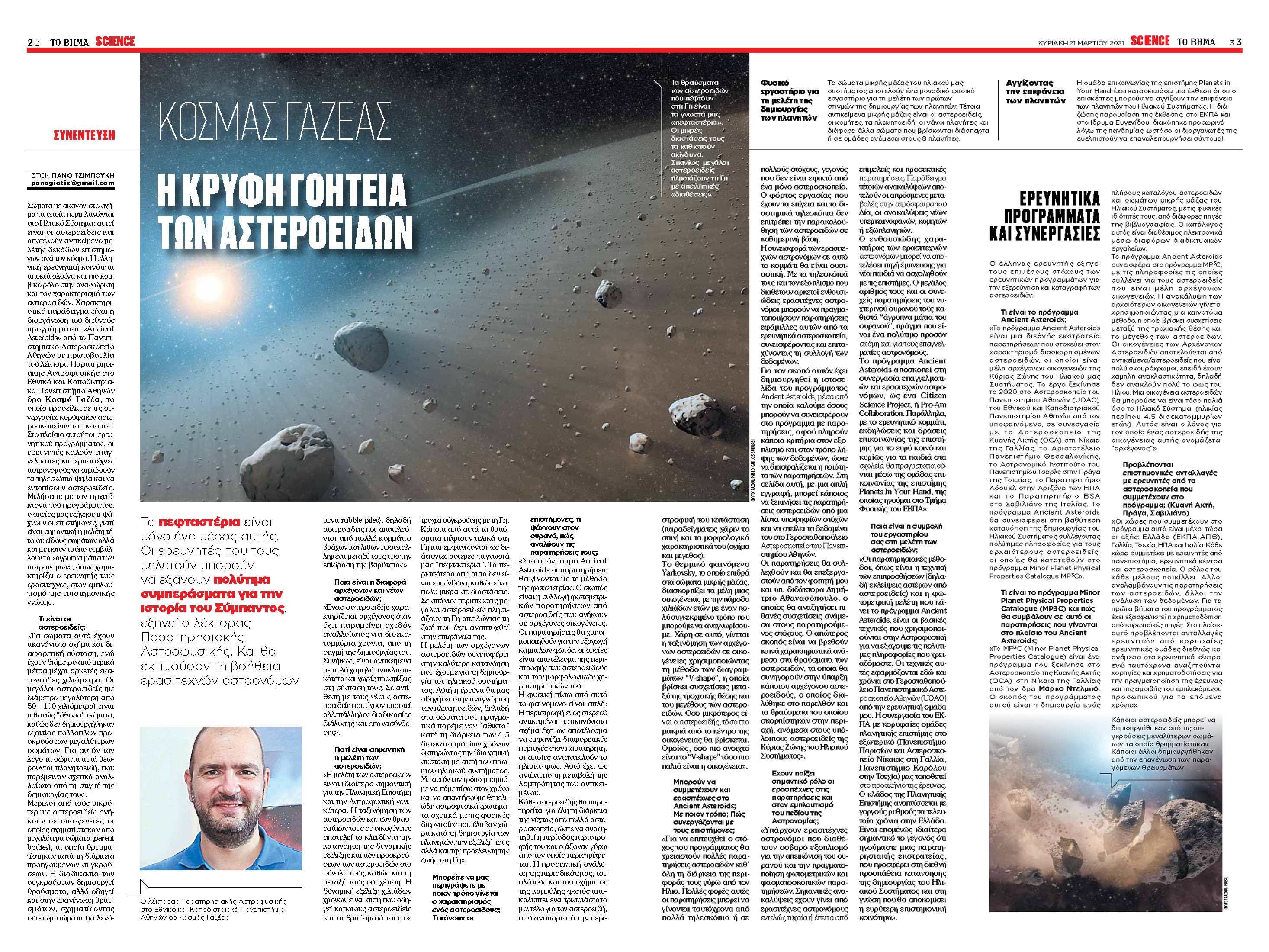D. Athanasopoulos, R. Bonamico, G. Van Belle, M. Conjat, A. Ferrero, J. Hanuš, J. Ďurech, C. Avdellidiou, K. Tsiganis, M. Delbo, and K. Gazeas
ABSTRACT
We invite observers to join an international observing campaign and obtain light curve of a selected number of the most ancient asteroids.
Analysis of these data will be important to reconstruct the original state of the asteroid belt, which is a crucial problem of planetary science.
This original state can be reconstructed through the identification of the oldest asteroid families. Traditional identification methods, like
Hierarchical Clustering Methods (Zappala et al., 1990; HCM), have difficulties to recognise Gyr- and older asteroid families, whose members are
very dispersed by the Yarkovsky effect. An innovative method, called V-shape search (Bolin et al., 2017), has been demonstrated effective
(Deienno et al. 2021) to identify these aforementioned very old collisional families by searching for the signature of the size dependent
dispersion of family members operated by the Yarkovsky effect.
The method has already successfully identified two primordial families which likely formed before the giant planet orbital instability
(Tsiganis et al., 2005) and could be as old as the Solar System and an ancient one that is ~3 Gyr-old (Delbo et al., 2017; 2019).
There is evidence from observations and theoretical evolution models that there are more old families to be detected (Delbo et al., 2017;
Dermott et al., 2018). However, the reliability of these V-shape families should be independently verified.
A very important test of family membership is the anisotropic distribution of spin vectors of the asteroid family member, which is a
fingerprint of the Yarkovsky effect evolution (Hanus et al. 2013). Namely, to test the working hypothesis that according to theories
of asteroid orbital evolution under the Yarkovsky effect, members of the inward (outward) side of V-shape of a family have a statistical
predominance of retrograde (prograde) objects. This hypothesis has been tested (Hanus, et al., 2013) already for known families,
and it is a reliable test for family membership.
Reference: D. Athanasopoulos, R. Bonamico, G. Van Belle, M. Conjat, A. Ferrero, J. Hanuš, J. Ďurech, C. Avdellidiou, K. Tsiganis, M. Delbo, and K. Gazeas, 2021, EPSC, 15, 355





